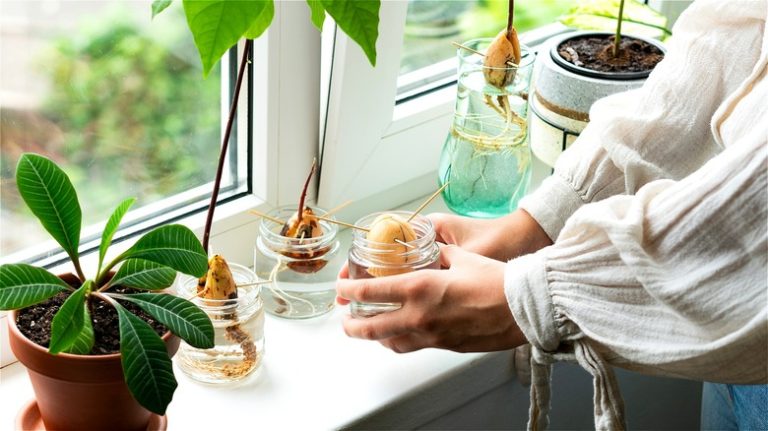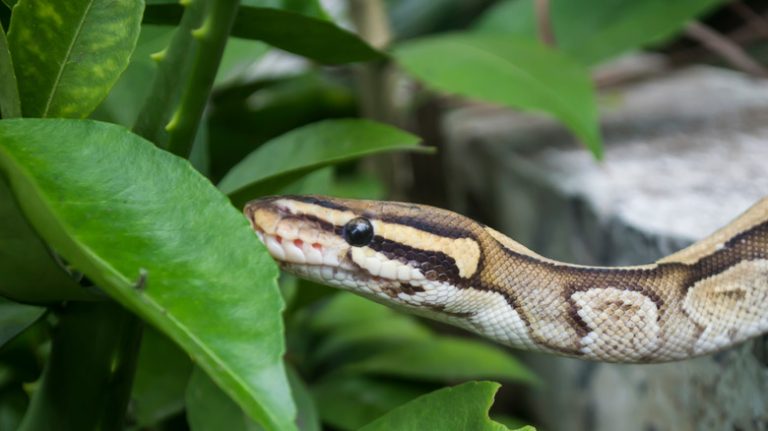Although rocks and gravel are some of the most common materials to add to the bottom of your pot, they may not be the best option. Unfortunately, adding chunky items to the bottom of your planter can sometimes create a perched water table, which is when water pools in a container when it encounters a different medium other than soil. That layer — such as gravel — stops it from filtering through as it normally would, causing the water to sit and oversaturate the pant’s roots. And since root rot is one of the most common houseplant killers, it’s crucial to do what you can to prevent waterlogging.
However, this doesn’t mean you can’t add anything to your pots to help your plant babies. When added carefully, certain items can help solve common problems, such as dirt spilling from the planter or large pots becoming too heavy when filled with a lot of dirt. And the best part is that some of these items might be lying around your house, waiting for you to use them. Here are some unexpected items you can repurpose to put at the bottom of your planters.
Add a coffee filter to stop dirt spillage
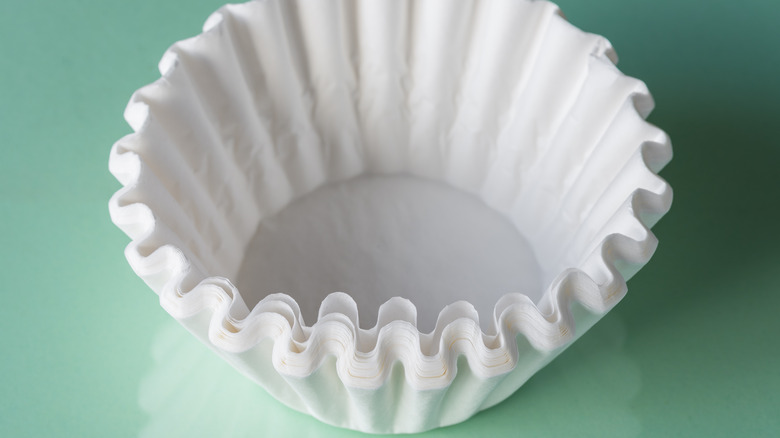
Coffee filters aren’t just handy for making a cup of Joe in the morning. Surprisingly, they can also be added to the bottom of your planter. According to amateur gardeners, these kitchen staples are excellent at water regulation by ensuring your plants don’t dry out. They hold onto excess liquid and then release it back into the soil as it dries. While there aren’t any scientific studies that prove this, enough people have had anecdotal success where this has become a popular houseplant tip. However, that’s not all. Coffee filters will also prevent dirt from spilling out from the drainage holes in the bottom of the pot. This will make watering much more convenient and a lot less messy, especially if you like to move the plant to the sink to do so. However, there is one slight downside: They are biodegradable, and although they decompose slowly, they aren’t permanent. You’ll likely have to replace them every six to eight months.
To use this trick, place a coffee filter at the bottom of a clean pot before adding any dirt. It should line the drainage holes to prevent the dirt from slipping past. For larger pots, you’ll need a few filters to cover the entire surface inside the planter. Dampening the coffee filters before lining the bottom can help them adhere better and stay in place while you add your soil and plant. From there, you can let the filter decompose naturally and add a fresh new sheet after nature takes its course.
Use pinecones as natural filler
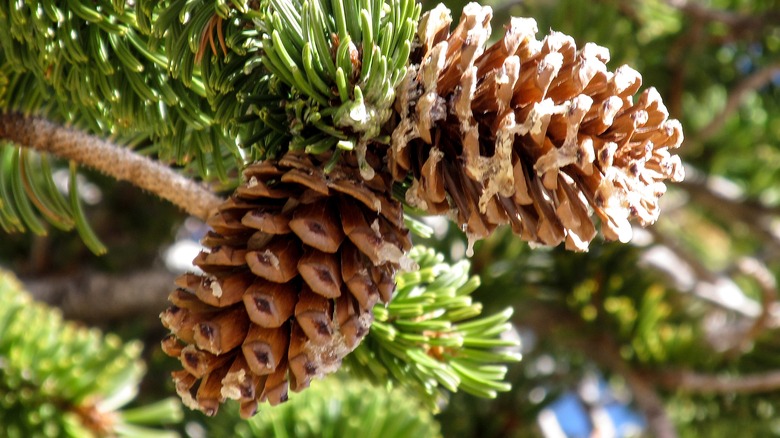
Pinecones make stunning additions to festive fall decor, but these natural beauties can be a huge help in the garden, too. So, if you have some littering your yard, save them for your large planters as free filler. They’re a huge help in making the planter less heavy since you can fill at least a third of it with lightweight pinecones rather than dense dirt. However, this method is better suited for larger containers rather than small ones for a couple of reasons. First, since its main purpose is to make containers lighter, your smaller planters don’t really need it. Second, filling a small pot with too many pinecones will limit the amount of room for soil and roots. This will minimize the amount of nutrients available for your plant and won’t allow enough room for your roots to grow.
Lastly, this hack will create a perched water table, and plants in large planters usually weather that risk better since they have more room. In a large container, the perched water table might not reach the plant’s roots thanks to the sheer amount of dirt in the planter, which means they won’t get waterlogged. But in a small container, the perched water table will likely cover the bottom half of the root system, which can lead to root rot. If you choose to try this hack for larger planters, add an even layer of pinecones to the bottom of the container, ensuring you don’t fill up more than a third of the pot. From there, pour soil on top and add your plant, double-checking there is plenty of space between the roots and the layer of pinecones. As a bonus, as this organic matter breaks down, it will also slowly release nutrients back into your soil.
Bricks to help weigh down planters
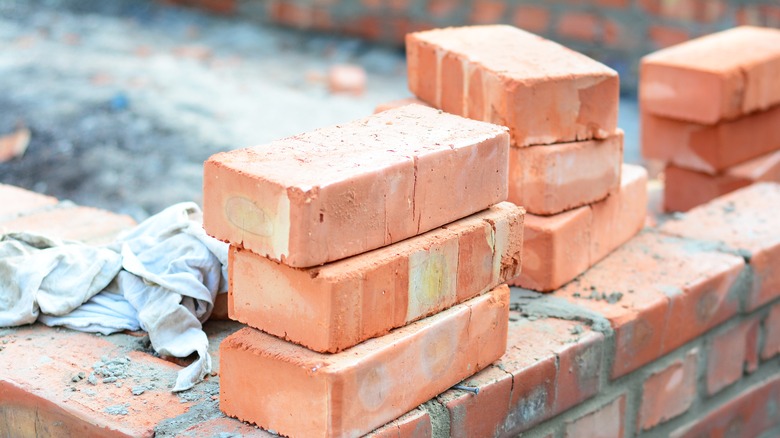
Radovan1/Shutterstock
While some large planters require a lightweight material to prevent them from being too heavy to handle, others benefit from adding a dense object. Perhaps you have a lightweight pot holding a top-heavy plant, like a tall tree or monstera. If so, adding a brick or two to the bottom will help stabilize it and prevent it from tipping over if someone bumps into it the wrong way. This is also a handy trick if you live in a windy area and keep your planters outdoors.
When using this technique, make sure to use two planters: One decorative one and one that you can nestle inside. Since you don’t want to add the bricks into the dirt, you will instead add them to the bottom of the outside container. Simply nestle the first planter into the larger, decorative one, and then circle the bottom with bricks. This will keep it in place, reducing its tipping risk.
Utilize broken sticks as a natural filler for heavy planters
Burak Can Oztas/Getty Images
When taking care of your backyard landscaping, don’t throw all the broken twigs you find into the burn pile. Instead, collect a few and add them to the bottom of your planters for a natural filler. Not only are they a sustainable resource, but they’re readily available and free of charge. As the sticks naturally decompose, they’ll release nutrients into the soil, giving your plants extra fertilization. However, they’ll take about three to four years to break down fully — and that’s when they’re shredded. Because of this, they’re better suited as a filler for large, heavy pots rather than just a fertilizer. Adding them to the bottom of an oversized pot will require you to use less dirt, making the container easier to lift and move around.
Like with the pinecones, this should not be used for small planters since it will create a perched water table. When adding it to a large container, you want to be careful and somewhat methodical when adding the sticks. If they’re too densely packed, there won’t be enough air pockets to allow proper drainage. Carefully place them and arrange them so there’s plenty of space between them all. Using twigs in differing sizes can make it a bit easier to ensure there’s enough oxygen surrounding them.
Eggshells can help fertilize
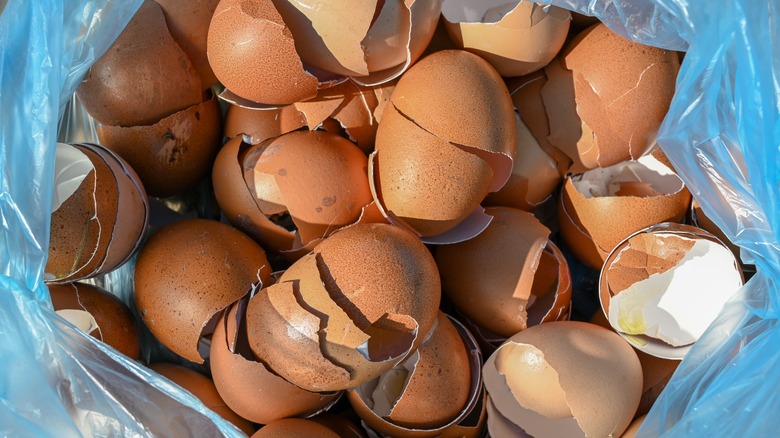
Vanja Stokic/Shutterstock
Eggs are packed with protein and are a staple for most breakfast lovers. While you probably don’t want to snack on the crunchy outer layer, your houseplants may enjoy the natural fertilizer they have to offer. That’s because the eggshells are made of calcium bicarbonate and other crucial minerals plants love. While DIY eggshell fertilizers are nothing new, most people put their crushed shells on top of their soil. However, research shows that plants absorb calcium only through their developing root tips, so it might be more beneficial to put them at the bottom of your planter.
To try this hack, gather your eggshells and let them dry out completely. Crunch the dried shells into smaller pieces by putting them in either a coffee grinder or a blender. Then, mix crushed eggshells with dirt in the bottom third of your planter. This will create a slow-release fertilizer. Pour the remaining dirt into the container, and add your plant. Remember, adding anything to the bottom of your plant containers can risk creating a perched water table. To test for this, you can add your eggshells, soil, and greenery into a transparent container so you can have a clear view of any H2O issues.
Repurpose broken terracotta pots to stop dirt from spilling out
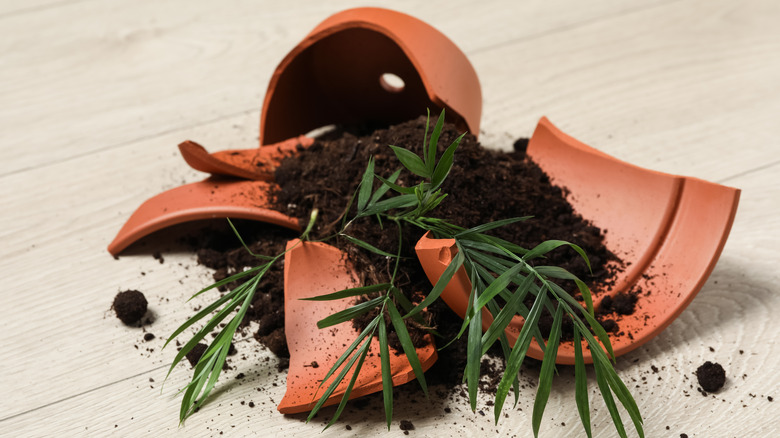
New Africa/Shutterstock
It’s heartbreaking when a beloved planter falls and shatters on the ground. Thankfully, you can repurpose the broken fragments of terracotta pots in your new pots. Terracotta is ancient clay used to make several household items like decor, vases, and other plant containers. Because of its porous and breathable nature, these shards can be used to prevent dirt from spilling out of drainage holes while still allowing water to pass through. This is an ideal solution for pots with large drainage holes that tend to create a dirty mess when watering. All you will need to do is place one to three medium-sized shards over the hole to act as a stopper. It’s a trick Martha Stewart herself uses, so it’s worth a try!
To pull off this hack, start by collecting the shards and use sandpaper to remove any sharp edges to prevent damaging roots that may grow around them. Carefully arrange the pieces at the bottom of the planter, using no more than one to three fragments to avoid creating a perched water table in the container.
Add pool noodles to oversized planters
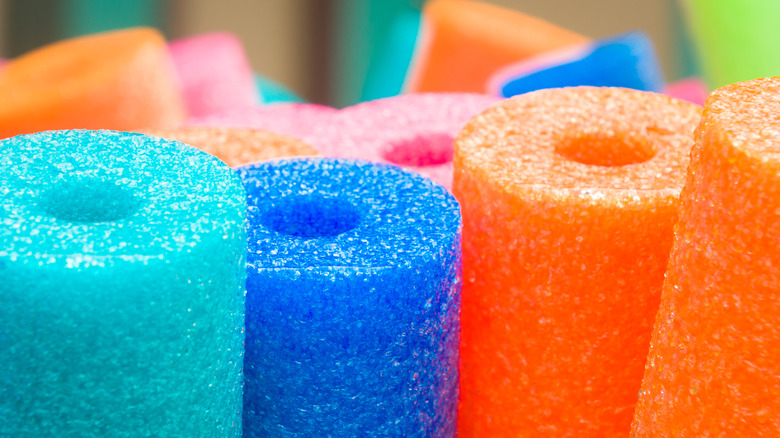
Kenwiedemann/Getty Images
Pool noodles may be one of the most common accessories to enjoy a summer day in the swimming pool, but they can also be a helpful tool for plant lovers. This hack went viral when TikToker pennyjo8 shared a video showing a planter filled with pool noodles before covering them with dirt. Lightweight and porous, these floaties make an ideal planter filler to take some weight off of massive outdoor containers. Plus, filling big pots with light foam rather than soil can save you some major cash. If you choose to go this route, just make sure to opt for polyvinyl chloride (PVC) free pool noodles to avoid any chemicals leaking into your soil during watering sessions.
While you can use this method as demonstrated in the viral social media clip, keep in mind that it will create a perched water table. To avoid that, you can tweak the hack a bit to prevent causing drainage issues. Rather than sticking the floats in the pot with your plants, use two pots instead. Add your plant to a smaller container, wind the pool noodles on the bottom of the larger planter, and place the smaller container on top, using the pool accessory like a shelf.

